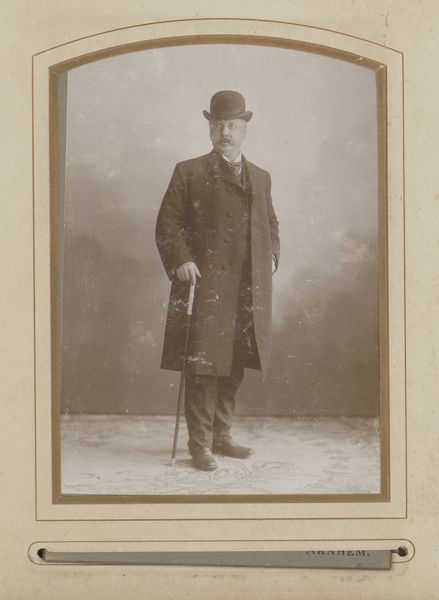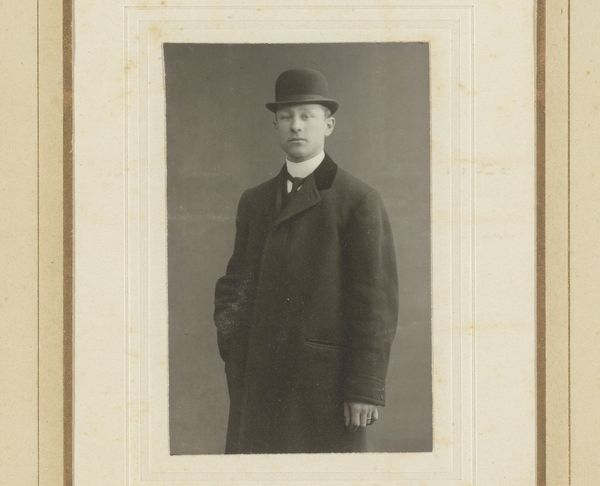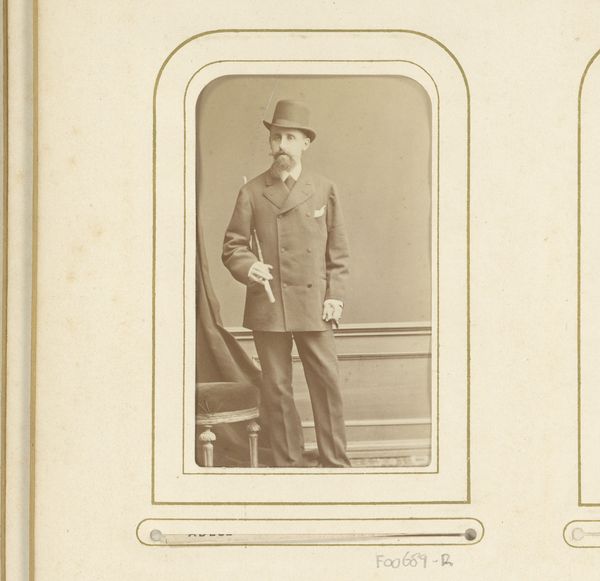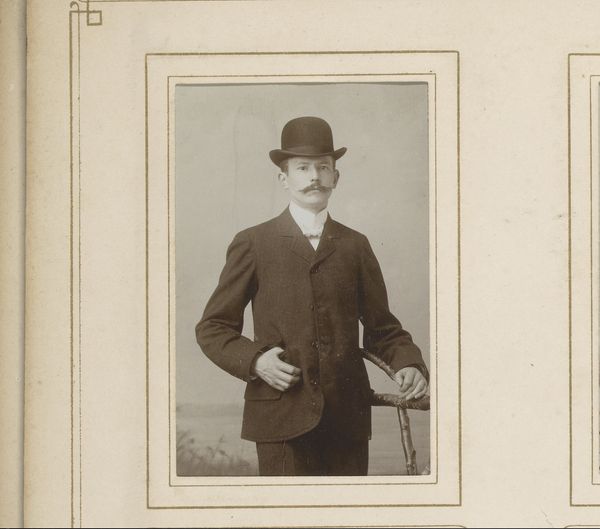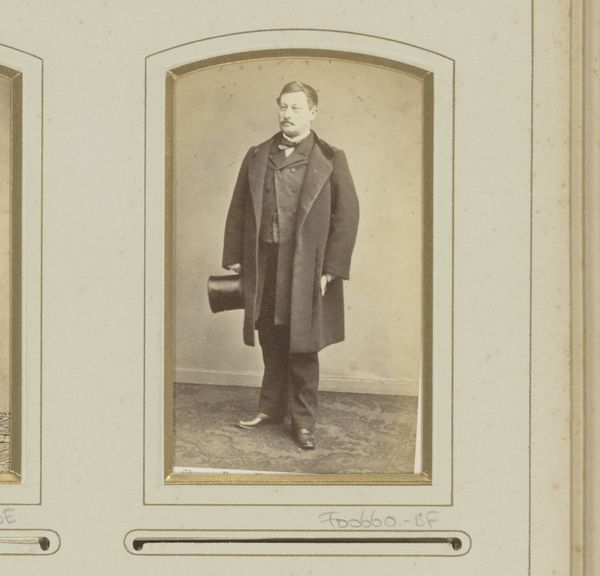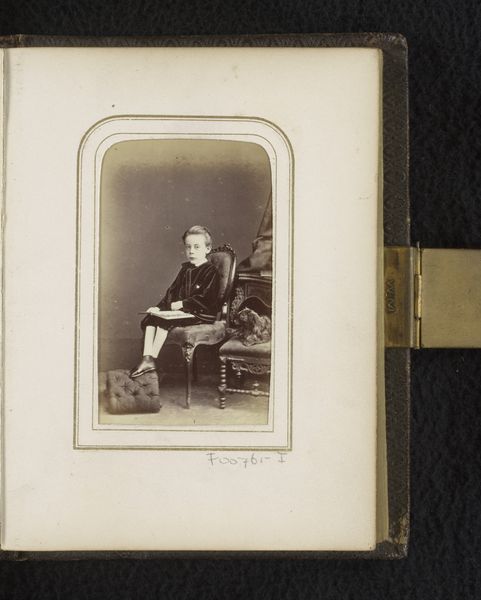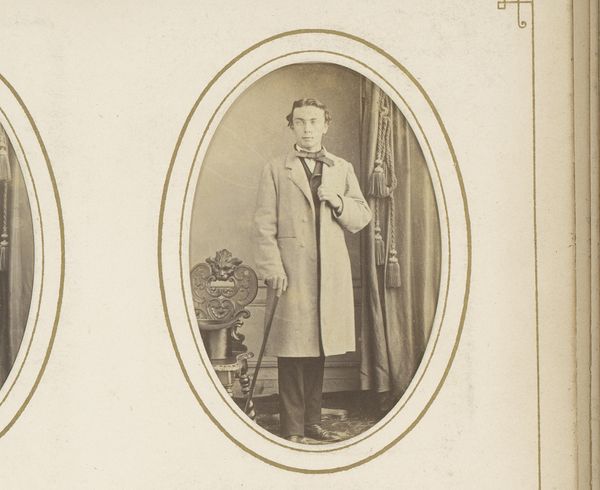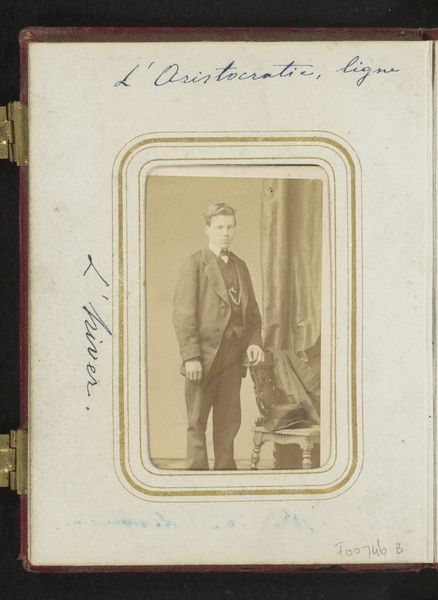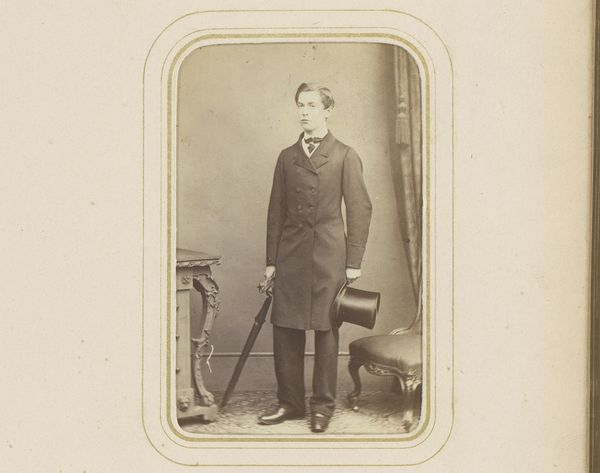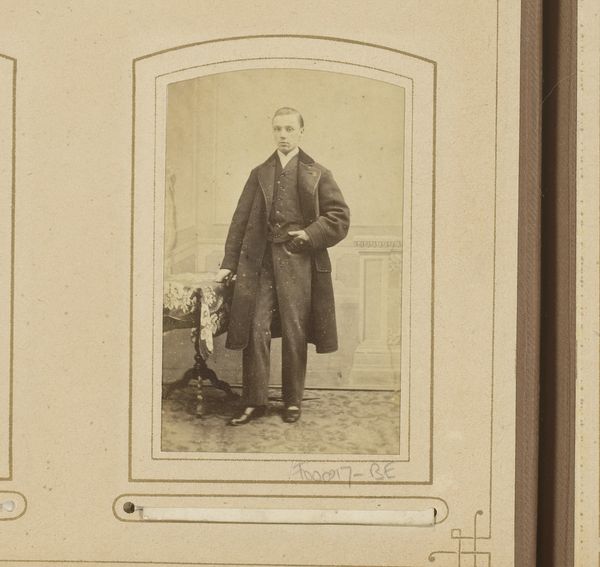
photography, gelatin-silver-print
#
portrait
#
figuration
#
archive photography
#
photography
#
historical photography
#
gelatin-silver-print
#
modernism
Dimensions: height 87 mm, width 53 mm
Copyright: Rijks Museum: Open Domain
Editor: So this is Stephanus Adrianus Schotel's "Portrait of a Standing Man with Bowler Hat and Walking Stick," a gelatin silver print made sometime between 1902 and 1920. It’s striking how posed and formal it feels. What can you tell us about it? Curator: It’s interesting to consider how photography shifted the landscape of portraiture. Prior to its popularization, only the wealthy could afford painted portraits. This image, likely commissioned, reflects a growing middle class asserting its own social status through a new, more accessible medium. The bowler hat and walking stick aren’t just fashion; they're symbols of bourgeois respectability. Who was this man and why did he want to be portrayed this way? Editor: So, the subject’s clothing and accessories communicate a desire for social acceptance, perhaps upward mobility? Did this accessibility change art's function for the broader public? Curator: Absolutely. The mass production of images allowed for the dissemination of ideas and visual representation on a scale never before seen. Photography contributed significantly to shaping public opinion, social trends, and the very concept of celebrity. It made art, in a way, democratic, though with its own new set of gatekeepers, like the photographer himself and the studios where these portraits were made. What kind of person might collect or appreciate an image like this then? Editor: Someone who valued social standing, perhaps? Or who appreciated a modernist style breaking with past artistic traditions? Thanks, I’m going to think more about the cultural significance of the portrait as a photographic object. Curator: Exactly. And that opens up a much broader reflection on the place of imagery in shaping society then and now.
Comments
No comments
Be the first to comment and join the conversation on the ultimate creative platform.

